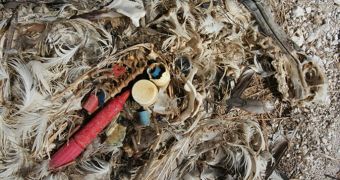Researchers have recently published the results of an exhaustive research conducted on the Atlantic Garbage Patch, an area of the ocean that concentrates vast amounts of pollution derived from human activities.
For years, various types of contaminants, mostly plastic debris, have accumulated into the brain, brought there by the currents making their way through the ocean.
The level of contamination in the waters is similar to the one experts recorded in the Great Pacific Garbage Patch, the first structure of this type to be positively identified.
But one of the mysteries related to the Atlantic formation was why it did not increase in size. For the past few years, its size has remained surprisingly constant, despite the fact that the plastic industry has ramped up its production output.
In the new investigation, researchers believe they've established the reason for this inconsistency, as well as for other mysteries related to the Garbage Patch.
Over the past two decades, the research team collected no less than 64,000 bits of plastic from the ocean, which they analyzed exhaustively. The results are now published in the August 19 issue of the esteemed journal Science.
“I think it's certain that the plastic is breaking down into pieces smaller than what we capture in the net,” says of the discrepancy Kara Lavender Law.
She was a scientist on the investigation, and holds an appointment at the Woods Hole, Massachusetts-based Sea Education Association.
An additional explanation, the group adds, could be that bacteria and other microorganisms that feed on plastic may have attached themselves to the smaller pieces.
The added weight undoubtedly drew the small plastic particles to the depths of the ocean, where they will remain until they are thoroughly decomposed.
The size of the Atlantic patch is still unknown, given that the exact location of its eastern “seaboard” has yet to be determined. “It's entirely possible that it reaches almost all the way across the Atlantic,” Lavender Law says.
“Understanding the size spectrum and the fate of the plastic is a very important direction to go,” the research continues, saying that the analysis work will not conclude with the recent Science paper.
The team will continue to sort through small pieces of plastic, in an attempt to collect more data on the Atlantic Garbage Patch, OurAmazingPlanet reports.

 14 DAY TRIAL //
14 DAY TRIAL //